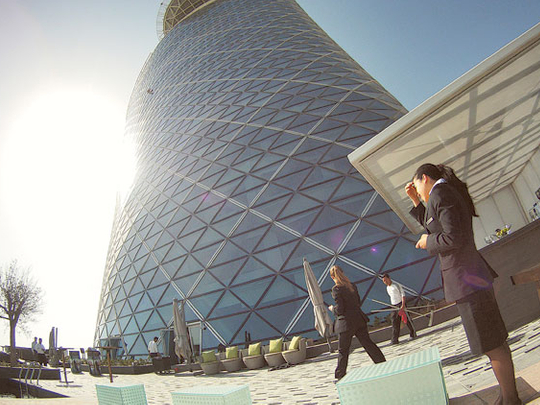
Dubai: Hotels in the UAE, Saudi Arabia, Qatar and Kuwait posted growth in occupancy levels in November last year, while properties in Egypt registered sharp declines, according to the latest HotStats report for the Middle East and North Africa (Mena) region, published by TRI Hospitality Consulting.
In Abu Dhabi, occupancy rates were up 7.8 per cent to 85 per cent in November compared to the same period a year ago, boosted by events and rising leisure demand, the report showed.
Hotels achieved the second highest rates in the region, with an average room rate (ARR — a benchmark for performance) of $ 246.74, up 0.8 per cent, resulting in a 10.9 per cent increase in revenue per available room (RevPAR) to $209.71.
Total revenue per available room (TRevPAR) climbed 11.4 per cent to $ 387.55, helped by a rise in beverage and conferencing revenues. As a result, profitability jumped 11.7 per cent to $188.44.
“In year-to-date terms, occupancies are 10.9 percentage points higher than the same period in 2012 and have helped boost top line revenues which have filtered through to the bottom line, driving a 24.1 per cent increase in profitability,” said Peter Goddard, managing director at TRI Hospitality Consulting, in the report.
Occupancy rates in Dubai, meanwhile, dropped 1.5 per cent in November, while ARR (average room rate) increased by 7.1 per cent, RevPAR by 5.3 per cent and gross operating profit per available room (GOPPAR) by 3.4 per cent, Rashid Aboobacker, senior consultant at TRI Hospitality Consulting, told Gulf News.
“We believe that the hotel performance in Dubai will demonstrate positive trend in 2014. We believe occupancy will remain strong, comparable to 2013 levels, and rates to improve 5-10 percent this year,” he said.
“Hotel performance this year is expected to be driven by stronger corporate and leisure demand, boosted by a stronger real estate and construction sector in Dubai and the gradual improvement in the economic situations in the main tourism feeder markets such as Europe,” he added.
Meanwhile in Kuwait, hotels saw occupancy levels go up 3.8 per cent to 62.5 per cent, which helped RevPAR grow by 45.7 per cent to $207.4. TRevPAR increased by 32.2 per cent to $432.19, driven by growth in conferencing and banqueting revenues. In addition, GOPPAR jumped 67.8 per cent to $244.70.
In Sherm El Sheikh, meanwhile, occupancy fell 20.4 per cent to 58.1 per cent in November compared to the corresponding period a year ago, while ARR dropped 26.6 per cent to $32.50, leading RevPAR to decline 45.7 per cent to $18.87. GOPPAR fell 65.6 per cent to $9.43.
“The ongoing unrest in Egypt has forced Sharm El Sheikh hotels to offer heavily discounted rates in order to elevate occupancies however, leisure visitors and tour groups which comprise the bulk of demand continue to be deterred,” Goddard said.
Over in Doha, occupancy rates increased by 2.7 per cent to 73.3 per cent, while ARR dropped 14.7 per cent to $231.20, and RevPAR fell 11.4 per cent to $169.40 .
In Riyadh, occupancy rates grew by 5.3 per cent to 69.1 per cent compared to the same time a year ago. ARR was down 6.7 per cent to $$239.59, while RevPAR was up 1.1 per cent to $165.63. Also, TRevPAR climbed 4.1 per cent to $277.66, boosted by double-digit growth in beverage and conferencing revenues.












